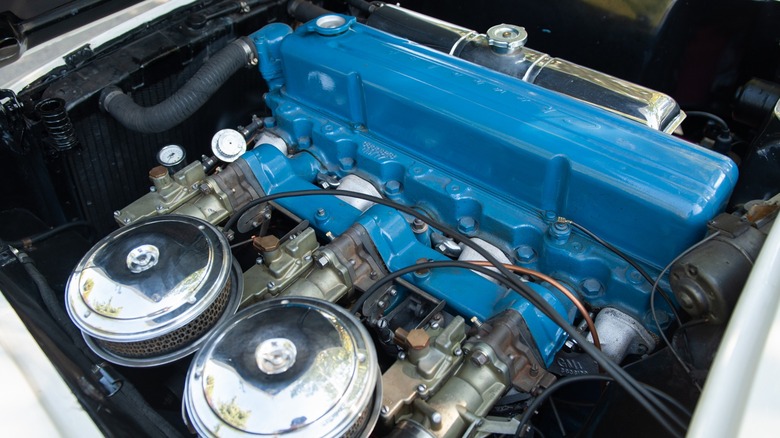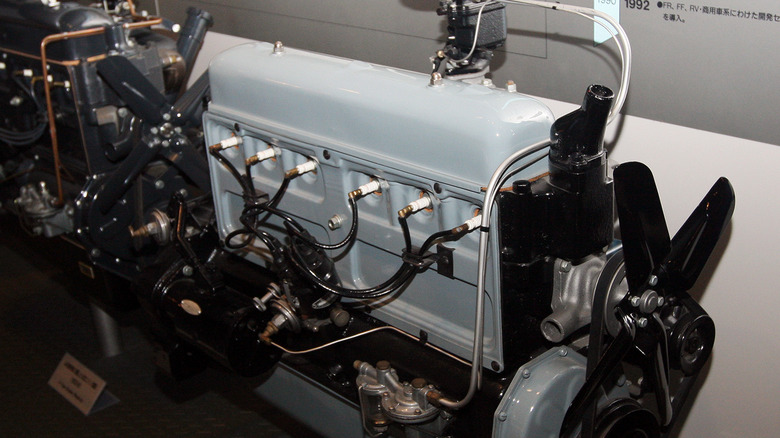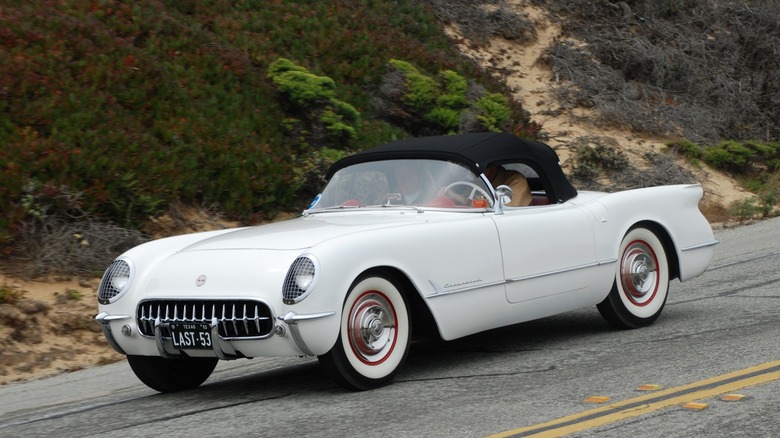What Made Corvette's Blue Flame Six Engine So Special
The first thing that comes to mind when most folks think of a Corvette is a V8 engine. However, the first-generation model didn't immediately sport the signature eight-cylinder powerplant. Instead, a humble inline-six sat beneath the hood. While a six-cylinder Corvette sounds like sacrilege by today's standards, European sports cars of the time were largely sporting an inline-six under the hood. Considering Chevrolet was out to create America's sports car, it makes sense as a starting point.
It may not sound like much, especially for a Corvette. In the interest of full disclosure, it wasn't much: its 150 horsepower output is laughable compared to the modern C8 Corvette's output of up to 670 horsepower. Without this little engine, though, we wouldn't have the C8. So, let's pay a little respect to our elders and dig into the "Blue Flame Six," the Corvette's very first engine. It carved the initial path that led us to over 70 years of Corvette history.
Updated tech on a reliable old truck engine
The Blue Flame Six is based on the architecture of an inline-six-cylinder Chevrolet truck engine known as the Stovebolt Six. First produced in 1929, the Stovebolt Six offered a starting point that Chevy engineers knew like the back of their hands. It needed a little tweaking, though. After all, they were building a sports car, and the lowly 115 horsepower and single-barrel carburetor just didn't cut it.
Chevrolet engineers took that truck engine and worked some magic. Improvements included bumping the compression ratio up to 8:1 and installing a new camshaft. At the time, it had the highest lift numbers of any production car camshaft at 0.405 inches and 0.414 inches for the intake and exhaust, respectively. Combining these upgrades with a triple-carburetor setup (one for every two intake ports) netted enough extra zest to get it to that seemingly low 150 horsepower output.
A double-action mechanical fuel pump and Corvette-specific ignition system made sure this engine ran in tip-top shape all the way to its top speed of 108 miles per hour at a hair-raising (for the time) 4,800 rpm.
The Blue Flame Six was outdated nearly instantly
It didn't take long for the Corvette to start to take on the V8 architecture we know and love to this day. The rapid development of the Small Block Chevrolet V8 saw its implementation in the Corvette for the 1955 model year. The additional power and grunt of the V8, as you're likely aware, won the hearts of American buyers. By the end of the first-generation Corvette run in 1962, buyers had the option of up to 360 horsepower thanks to the V8 powerplant.
Interestingly, the Corvette also wasn't available with a manual transmission at all until the implementation of the V8 powerplant. An automatic transmission was quite the engineering feat at the time, and Chevrolet wanted the Corvette to be the sports car of the future. Fortunately, minds were changed. If nothing else, we can thank the Blue Flame Six for not only bringing us the Corvette but also bringing us Corvettes with manual transmissions.


